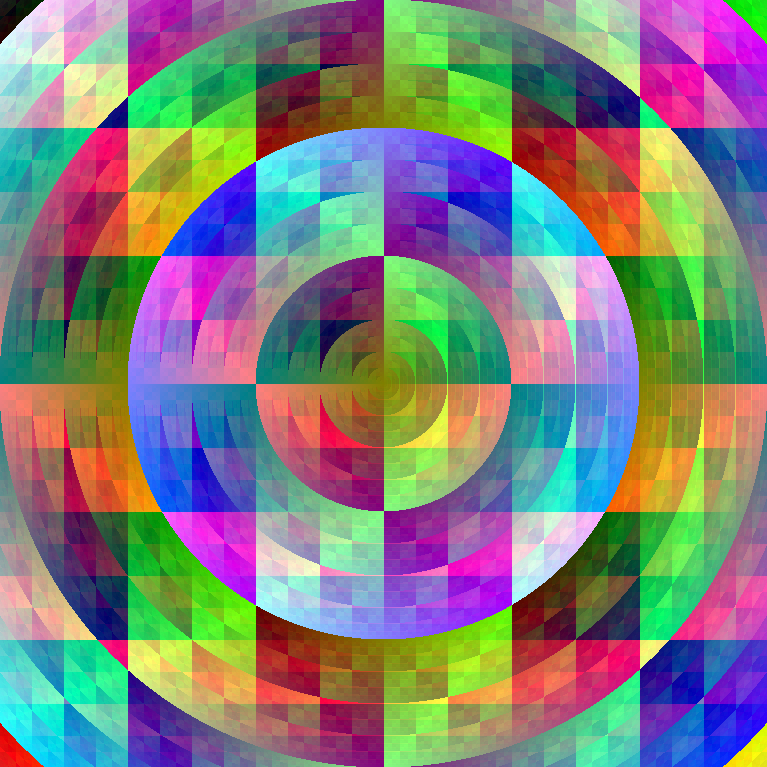I wanted to learn a new programming language and looked at some of the most popular and well-liked ones, using the 2023 Stack Overflow Developer Survey as a starting point.
I started with studying Rust. Rust is really well liked on Stack Overflow, and I enjoyed learning it. There are a lot of things I like about it, but it focuses so much on efficiency and safety that the code tends to be pretty verbose. It has a lot of features—maybe too many for me. But if I were working on code that needed to be really fast and bullet-proof, I’d learn more Rust.
More recently I’ve been learning Go (aka Golang) using the Tour of Go web tutorial. The developers of Go wanted to merge the best parts of C (fast) and Python (easy), and I feel like they did a pretty good job. I found it much easier to learn than Rust, and I liked how simple they were able to keep the language.
As I came to the conclusion of the tutorial, I used Go to generate a bunch of math-art pictures. Below are the two that I liked the most, with source code (which you can run and edit online at this Tour of Go page).


package main
import (
"image"
"image/color"
"math"
"golang.org/x/tour/pic"
)
type Image struct{}
func (i Image) Bounds() image.Rectangle {
return image.Rect(0, 0, 767, 767)
}
func (i Image) ColorModel() color.Model {
return color.RGBAModel
}
// Here's the interesting part: A function that returns the RGBA color at
// each (x, y) coordinate.
func (i Image) At(x, y int) color.Color {
xc, yc := (767.0/2)-float64(x), (767.0/2)-float64(y)
d := int(math.Sqrt(xc*xc + yc*yc))
v := (x ^ y) ^ d
// Image 1
// return color.RGBA{byte(v), byte(x^y), byte(d), 255}
// Image 2
return color.RGBA{byte(v^x), byte(v^y), byte(d), 255}
}
func main() {
m := Image{}
pic.ShowImage(m)
}
